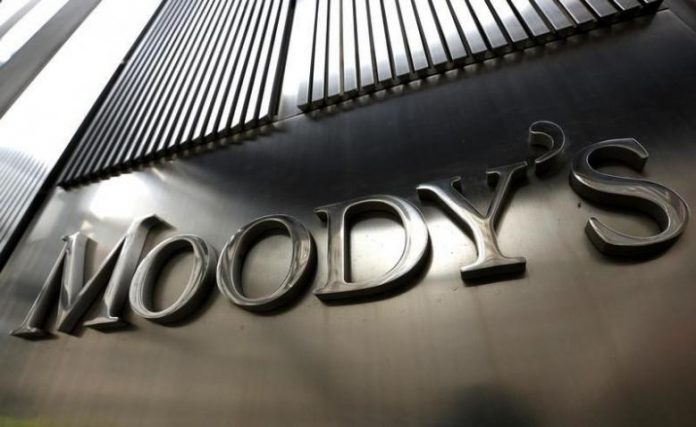
LAHORE: International credit rating agency, Moody’s, has kept a stable outlook for Pakistan’s banking sector stimulated by a growing economy, enhanced domestic demand and China-funded infrastructure projects.
The credit rating agency’s outlook took an in-depth research into how Pakistan’s banking sector will evolve over the next 18 months and what its expectations are.
In its research, Moody’s said that economic growth would contribute to growth in lending and a slight improvement in asset quality. It highlighted the banking sector’s profitability would remain stagnant and stable funding from customer deposits and high liquidity would remain key strengths.
The report said “Customer deposits make up around 70 per cent of total assets, and we expect these to continue to grow by 12 per cent-15 per cent this year, giving plentiful, low-cost funding. Cash and bank placements account for around 11 per cent of total assets, while an additional 44 per cent is invested in government securities (which are repo ‘able with the central bank) offering sound liquidity.”
Moody’s predicted Pakistan’s economy real GDP growth would rise to 5.5 per cent in FY 18 and 5.6 per cent in FY19 respectively. According to its analysis, investment in infrastructure and robust domestic demand will the main fuels of economic growth, which would enable lending to grow between 12-15 per cent for 2018.
Regarding CPEC, Moody’s said it had boosted business confidence as renowned international companies announced plans to invest in Pakistan and entering into partnerships with domestic entities. This was highlighted by the entrance in the auto sector by Hyundai, Renault, and Kia motors.
Also, CPEC would aide growth in construction and manufacturing activities and help in increasing foreign direct investment (FDI), which grew 57 per cent during July-November 2017 of current financial year.
Private sector credit growth according to Moody’s would continue. It predicted private sector lending to grow by 12-15 per cent during 2018, due to better economic conditions despite a rising fiscal deficit which the banks were partly financing.
Moody’s report further highlighted, “Loan growth and deepening financial penetration will also be supported by state initiatives, including branchless banking, SME lending and Islamic Banking.”
However, Moody’s said Pakistan remained vulnerable to political instability and worsening of its domestic security, which could hit its economy.
It added, “A weaker currency is reflecting a build-up of external pressures that would raise inflation and borrowing costs for the government.”
It further added that climate change risk, with seasonal monsoon rainfall, is continuing to influence agricultural sector growth and rural household consumption.
It predicted non-performing loans (NPLs) which stood at 9.2 per cent of gross loans at end of September 2017 would decline in the present supportive macro environment, aided by the diversified loan portfolios and low corporate debt levels of banks.
Also, the credit rating agency warned Pakistan’s asset risk remained high because of weaknesses in legal framework followed by ineffective foreclosure processes with little data available for assessing borrower creditworthiness.
Moody’s research cautioned that the banks’ high-level exposure to low-rated government securities which forms 44 per cent of their assets, was a major risk.
It noted capital tier 1 ratios which stood at 12.7 per cent at end of September 2017 have fallen but were expected to stage a recovery slowly once stringent regulatory requirements get enacted within this and next year.
The report highlighted capital will be boosted by higher profit retention with capital increases and capital optimisation measures. Also, Moody’s said despite margin pressure, it felt profitability would remain stagnant.
Moody’s report said despite the interest margin compression and higher taxes, profits would have strong backing from the robust rise in lending with a concentration on low-cost current accounts and average provisioning needs.
It forecast the interest margins to stabilise by end of 2018, as reinvestment in high-margin Pakistan Investment Bonds (PIBs) with lesser-yielding treasury bills (T-Bills) reach their conclusion.
In the report, Moody’s also emphasised interest margins would also be helped by further increases in interest rates.






















